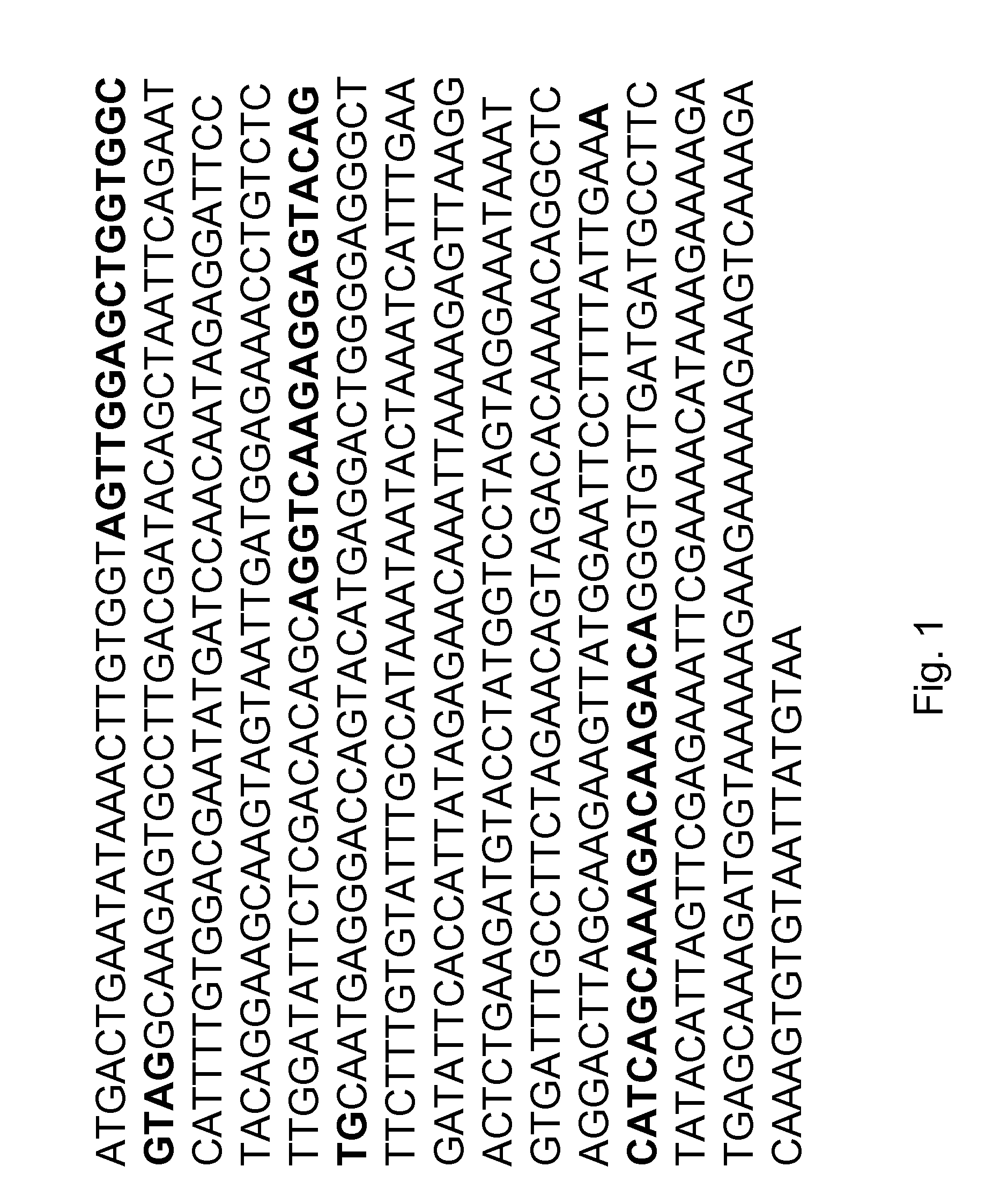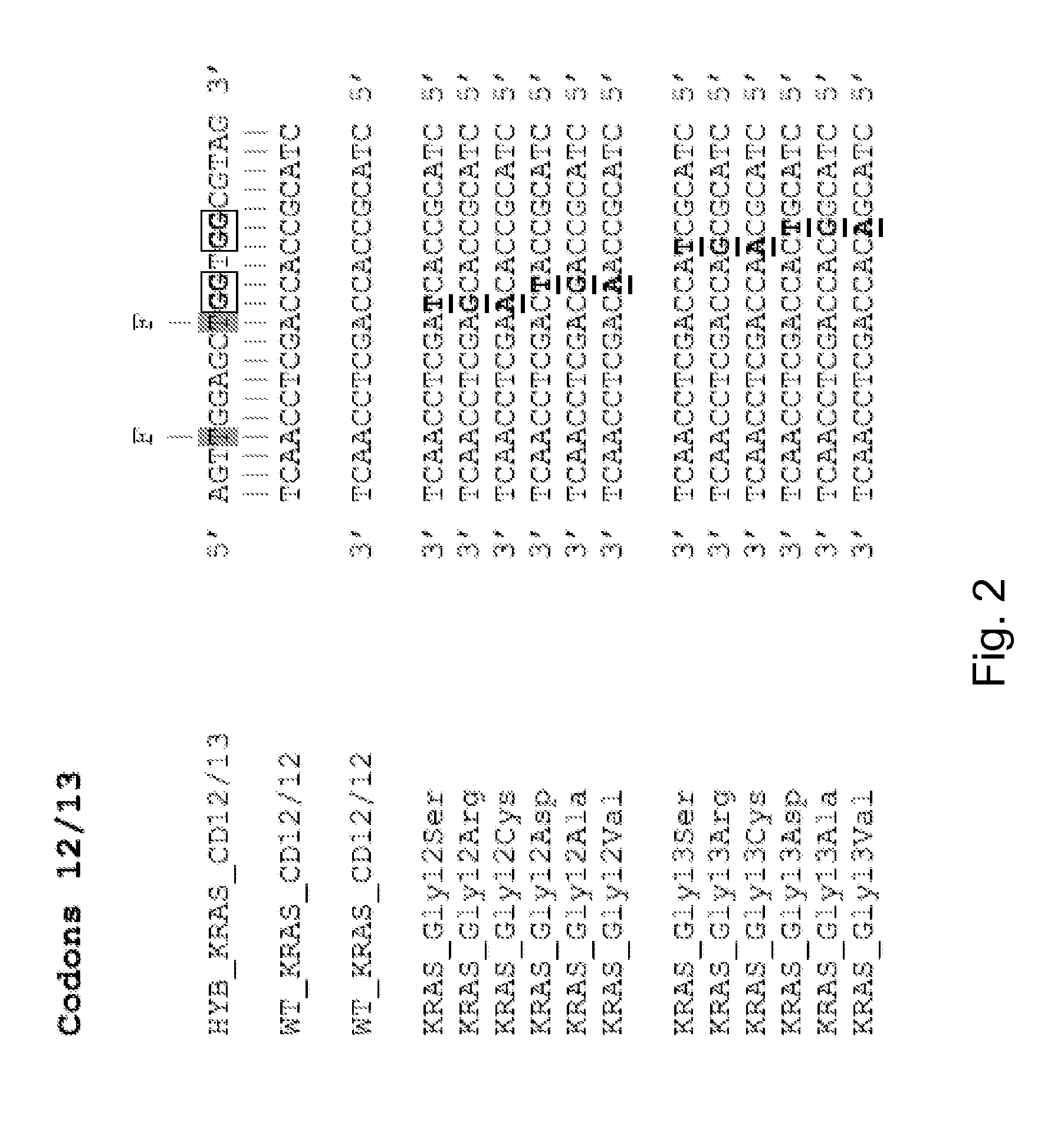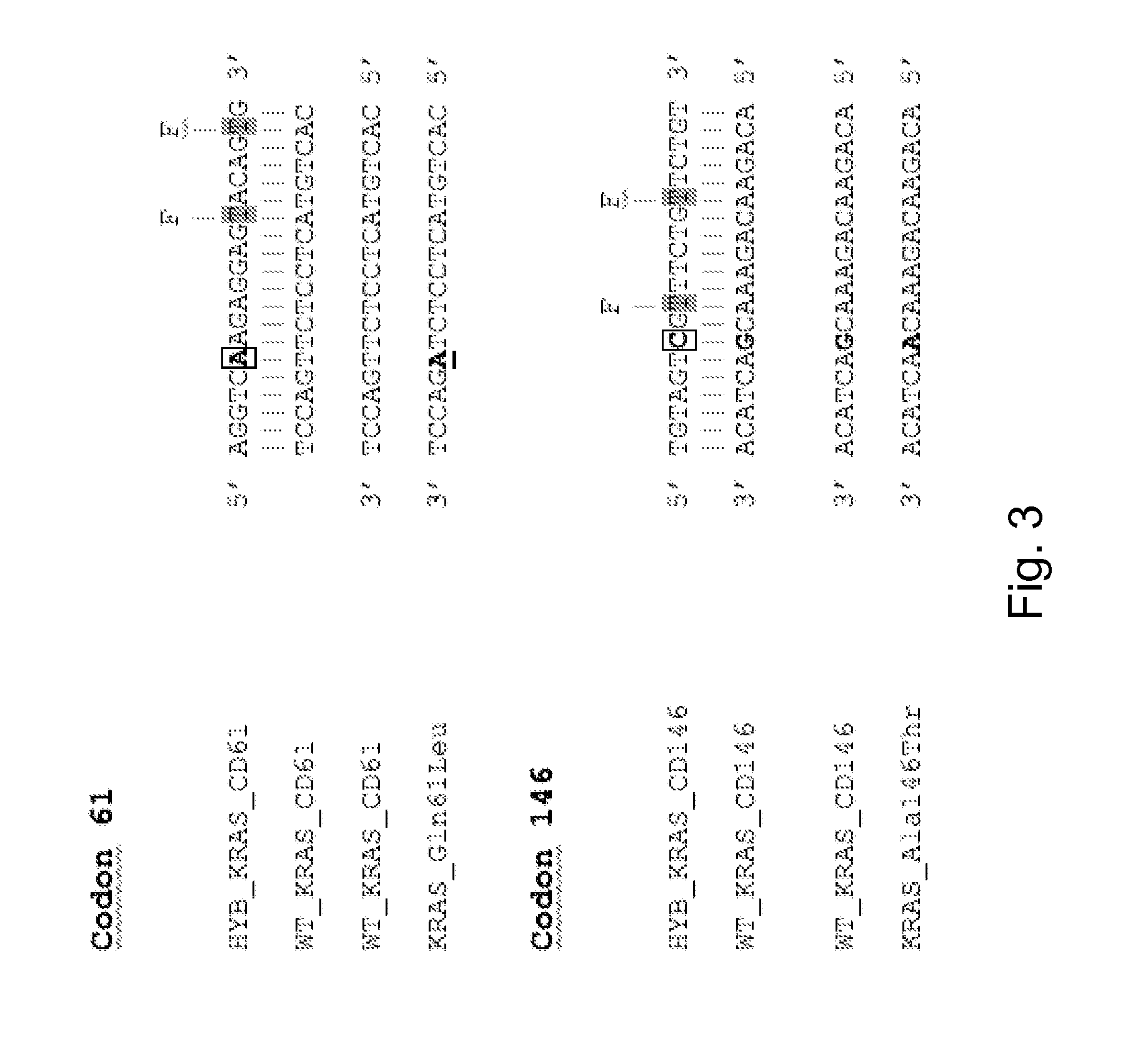Mutational analysis
a technology of mutations and methods, applied in the field of mutation analysis, can solve the problem of not teaching methods for selectively amplifying one snp variation, and achieve the effect of easy and rapid analysis
- Summary
- Abstract
- Description
- Claims
- Application Information
AI Technical Summary
Benefits of technology
Problems solved by technology
Method used
Image
Examples
example 1
K-RAS
[0079]A partial sequence of the wild type K-RAS gene is given in FIG. 1. Target regions in codons 12 / 13, 16, and 146 are highlighted in bold.
[0080]Codons 12 and 13 of K-RAS are susceptible to a large number of SNPs, resulting in the mutations Gly12 and / or Gly13 to Ser, Arg, Cys, Asp, Ala, Val. These possible mutations, and the corresponding DNA sequences, are shown in FIG. 2. Also shown in FIG. 2 is the sequence of the probe used to detect each of these SNPs, HYB_KRAS_CD12 / 13. As is apparent, the probe sequence is fully complementary to the relevant wild type target sequence, and has one mismatched base compared with each of the possible mutant sequences. The mismatch is internal to the probe, rather than at either of the ends. The probe is a hyBeacon® probe, having a pair of fluorophores which alter their emissions when the probe is in a double stranded duplex compared with single stranded form. The location of the fluorophores is marked.
[0081]FIG. 3 gives probe, wild type, an...
example 2
EGFR
[0086]FIG. 10 shows the EGFR probe sequence (EGFRX18_HYB) for the EGFR exon 18 region. The probe sequence is fully complementary to the wild type region, while there are three potential SNP mutations (2155 G>A, 2155 G>T, and 2156 G>C), each of which differs from the probe sequence by a single mismatched base. Again, the EGFRX18_HYB probe is a hyBeacon® probe having two fluorescent moieties.
[0087]FIG. 11 shows an EGFR probe sequence (EGFRX19_HYB) for EGFR exon 19. Unlike exon 18, in which the mutant form is a SNP, exon 19 may carry various deletion mutants. The potentially deleted region is shown in bold in FIG. 11, while FIG. 12 shows the exon 19 probe hybridised to a number of deletion mutants of varying lengths. The underlined regions of the probe do not hybridise to the target, and so form a loop. This alters the Tm of the probe:target duplex, in much the same way as the presence of a base mismatch in a SNP. The change in Tm depends on the size of the unhybridised region, and...
example
Preferential Amplification of Mutant Genotypes
[0095]Due to the small percentage of somatic mutation within any given sample against a background of wild type sequence, a systematic approach to assay design is usually necessary to improve the performance and sensitivity of mutation detection. Generally knowledge of the mutation is required to target amplification from specific mutation sites, and multiple primers are required for multiple mutations. However, the methods disclosed herein avoid the need for such knowledge. As well as somatic mutations, the methods may find other applications; for example, low-abundance HIV drug-resistant variants can increase a subject's overall burden of resistance, yet commonly go unrecognised by conventional genotyping.
[0096]The amplification methods described herein use asymmetric PCR, which preferentially amplifies one strand of the target DNA. Standard thermal cycling is carried out as in conventional PCR, but with a limiting amount of one primer...
PUM
| Property | Measurement | Unit |
|---|---|---|
| Tm | aaaaa | aaaaa |
| Tm | aaaaa | aaaaa |
| Tm | aaaaa | aaaaa |
Abstract
Description
Claims
Application Information
 Login to View More
Login to View More - R&D
- Intellectual Property
- Life Sciences
- Materials
- Tech Scout
- Unparalleled Data Quality
- Higher Quality Content
- 60% Fewer Hallucinations
Browse by: Latest US Patents, China's latest patents, Technical Efficacy Thesaurus, Application Domain, Technology Topic, Popular Technical Reports.
© 2025 PatSnap. All rights reserved.Legal|Privacy policy|Modern Slavery Act Transparency Statement|Sitemap|About US| Contact US: help@patsnap.com



